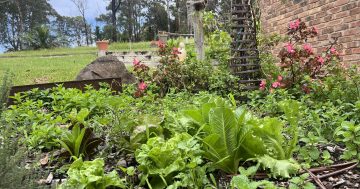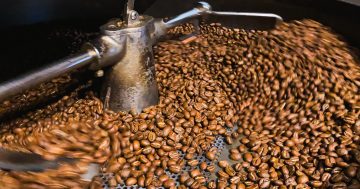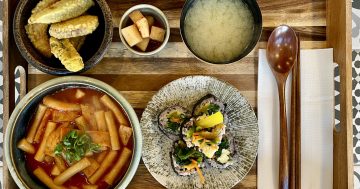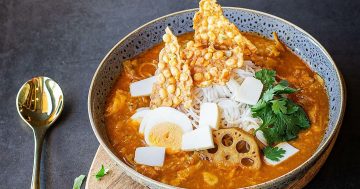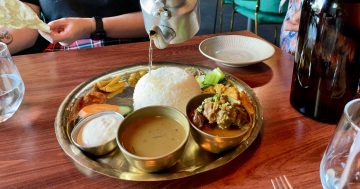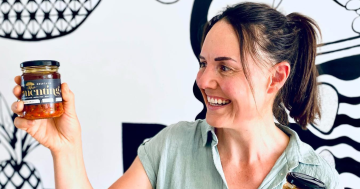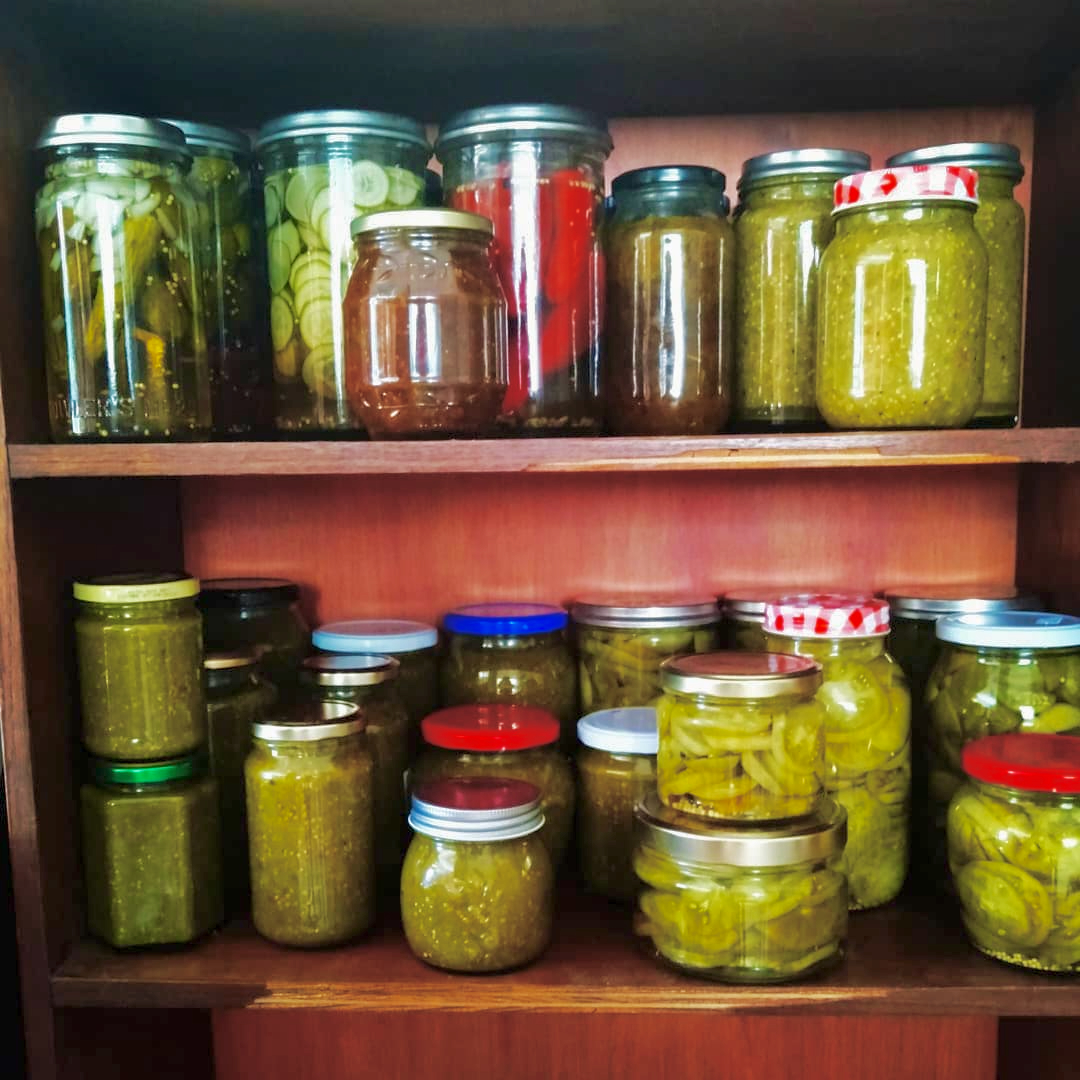
Once you’ve adopted a ‘we can pickle that!’ attitude you’ll quickly find yourself with shelves of preserves. Photo: Lucy Ridge.
Pickles and preserves were historically a way for people to keep ingredients for long periods of time, improve food security through lean months, maintain a varied diet across seasons, and prevent waste. The modern benefits of refrigeration have overcome these challenges, but there’s still a lot to be said for the humble pickle.
There’s a brilliant sketch from the comedy show Portlandia where a couple declares “We can pickle that!” to an increasingly bizarre series of ingredients. It’s one of those random pieces of pop culture that lives rent-free in my head and I often think of it when I’m busy preserving various fruits and vegetables. And as the cost of living crisis affects more people, I think it’s well worth adopting a ‘we can pickle that!’ mentality to live sustainably, improve your cooking skills and save money.
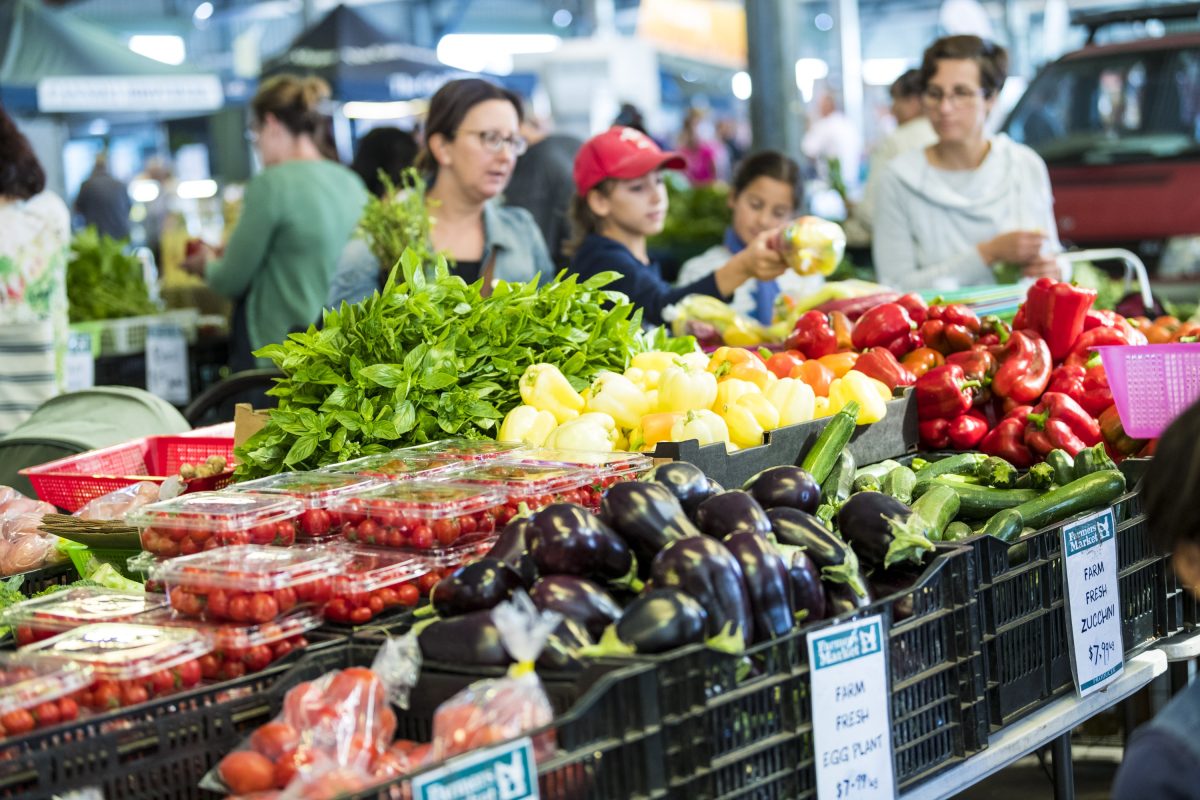
Beginners to the world of pickling are advised to start with vegetables at the peak of their seasonality, which are usually cheaper and easier to come by. Photo: Capital Region Farmers Market.
My first tip for any novice pickler is to start with ingredients that are plentiful and affordable. That generally means finding vegetables at the peak of their seasonality. Your local farmers market is the best place to start, or visit Fyshwick markets at the end of the day to pick up a bargain. And you don’t need to pick the prettiest veggies either: wonky carrots make great pickles!
You can often find things to pickle from people in your neighbourhood: you might be surprised how often you get a positive response to a note dropped in a letterbox. I’ve received box loads of green tomatoes and oversized zucchinis after posting on a local Facebook group. It’s good practice to return a jar or two of the resulting pickle in exchange.
Once you’ve sourced your pickling veg you just need vinegar, salt, sugar and a recycled jar to stick it all in. When you finish a jar just strain off the remaining liquid, bring it to the boil and use it again for another round of pickles. You can even reuse your pickling liquid in salad dressings or if you are feeling creative (or maybe just brave) try using it as an ingredient in a cocktail. I’ve spent many an evening pickling my own insides while perfecting the art of a gin and pickle juice soda.
Herbs and spices will add a little extra ‘zhuzh’ to your pickles: a bit of chilli will transfer heat, or try fresh dill for a more classic cucumber pickle. Cauliflower florets pickled with turmeric will make a bright orange pickle, or add beetroot for a vibrant pink. And your pickles can be used for all sorts of dishes: in a sandwich, on your scrambled eggs, or as a way to enliven the classic depressed-millennial special ‘Cheese for Dinner’.
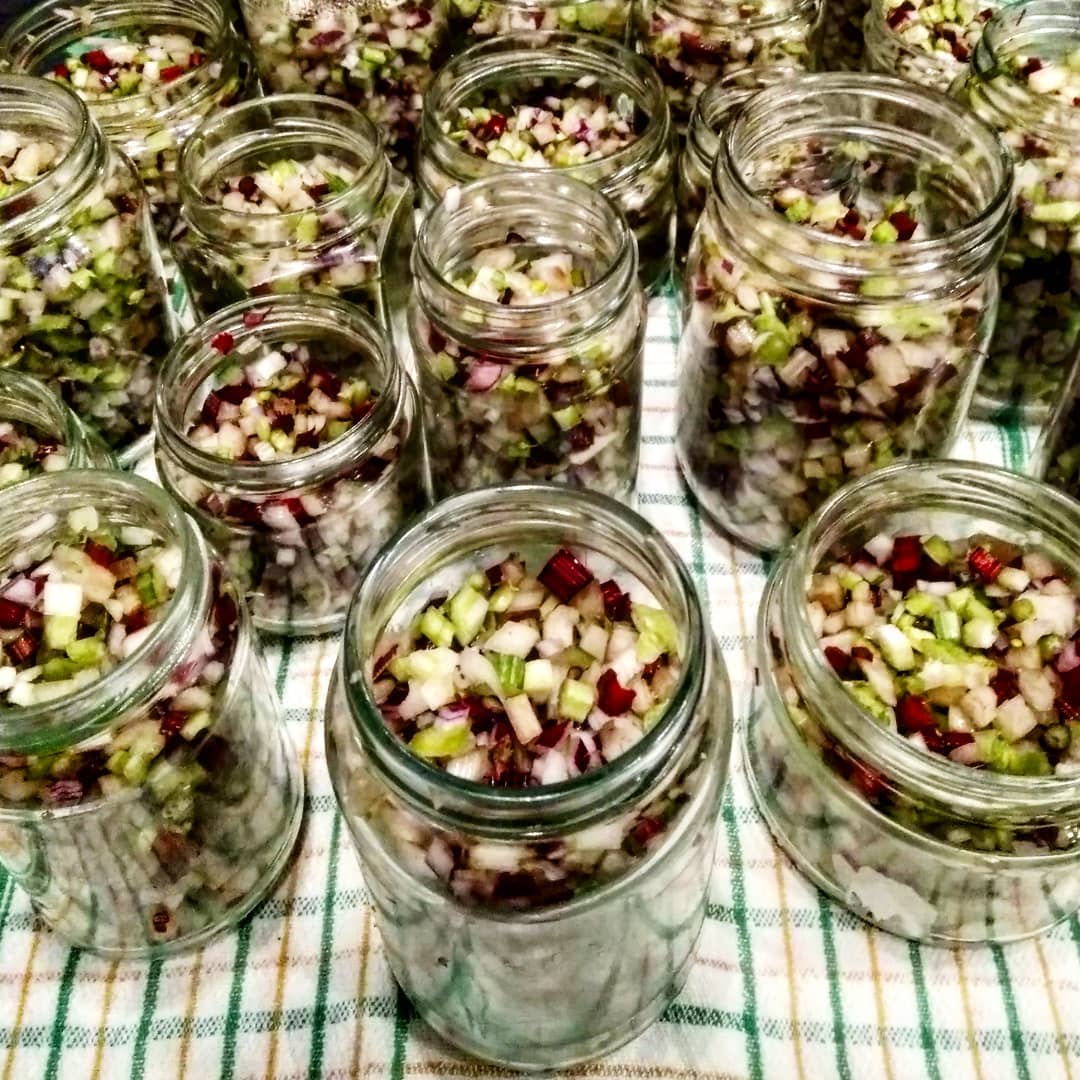
Pickling the diced stems of silverbeet and beetroot makes a salad dressing out of something you’d otherwise throw in the compost. Photo: Lucy Ridge.
A pickle is as simple as pouring vinegar over veggies in a jar and sticking them in the fridge, but if you can extend your skills to heat-treating jars your pickles can stay on the shelf for months or even years. Once you’ve mastered a simple pickle you can branch out into fermenting, salting, and making preserves, relishes and jams. Canberra has a surfeit of backyard fruit trees and if you play your cards right you’ll never need to purchase plum jam again.
Homemade pickles also make thoughtful (but affordable) gifts for friends, and if you display them proudly they’ll add an authentic cottagecore vibe to your living space.
And don’t forget about the slightly sad veggies in the corner of the vegetable crisper either. Pickling is a great way to reduce your food waste, get better value for money and lengthen the lifespan of food you’ve already paid for. Broccoli stems can be cut into batons and pickled for a homemade banh mi, or dice up silverbeet stems for a crunchy salad dressing. You can even pickle the white rind from a watermelon: throw in a few slices of neglected ginger and you’ve got a pickle that will make your tuna and rice approximately 80 per cent less sad.
Soon enough you’ll be eyeing off every piece of food in the house and thinking: ‘we can pickle that!’
Original Article published by Lucy Ridge on Riotact.


